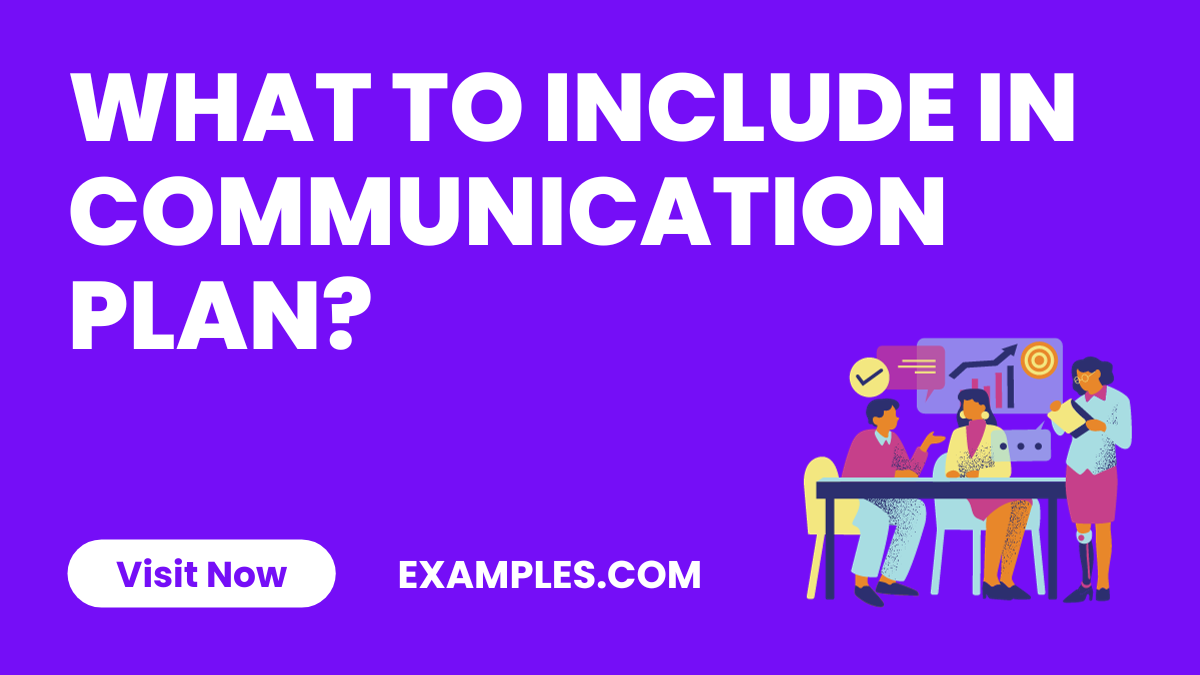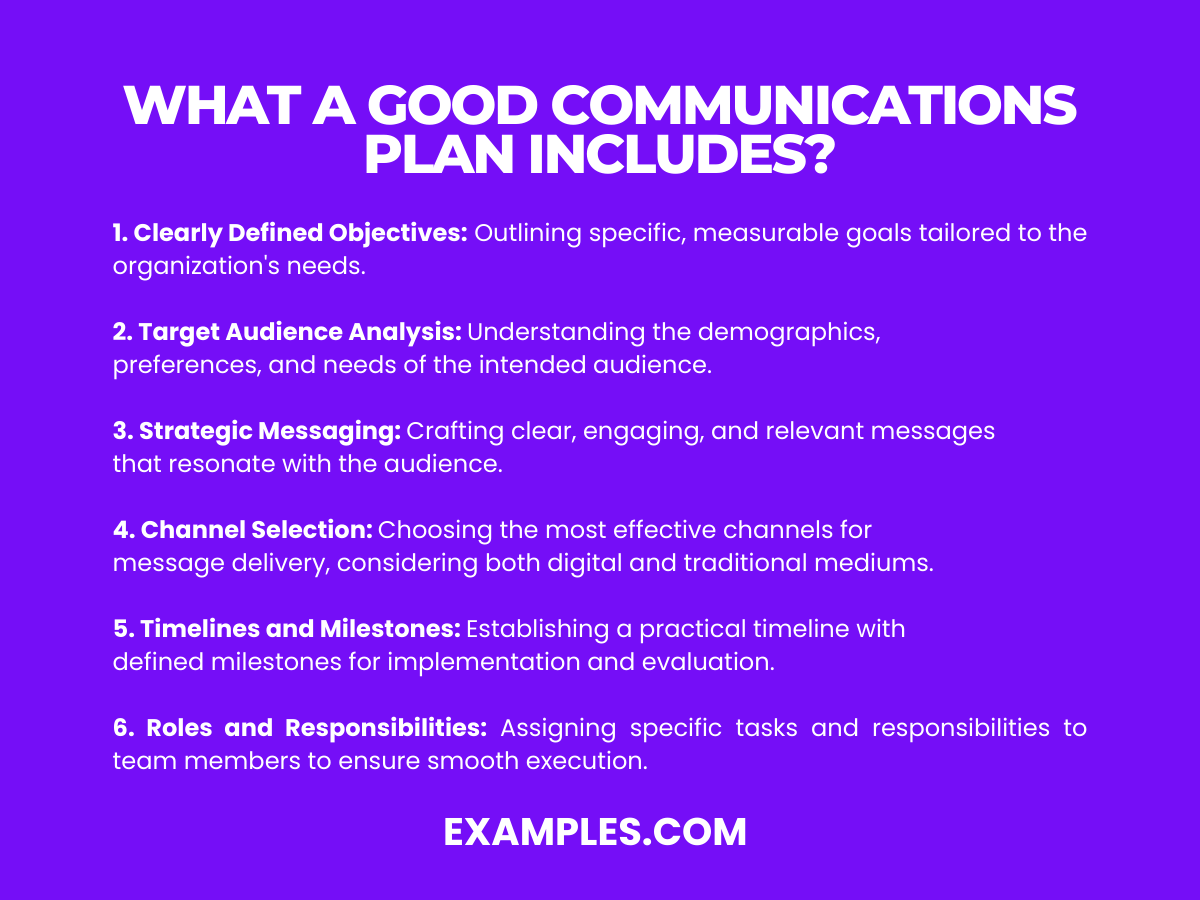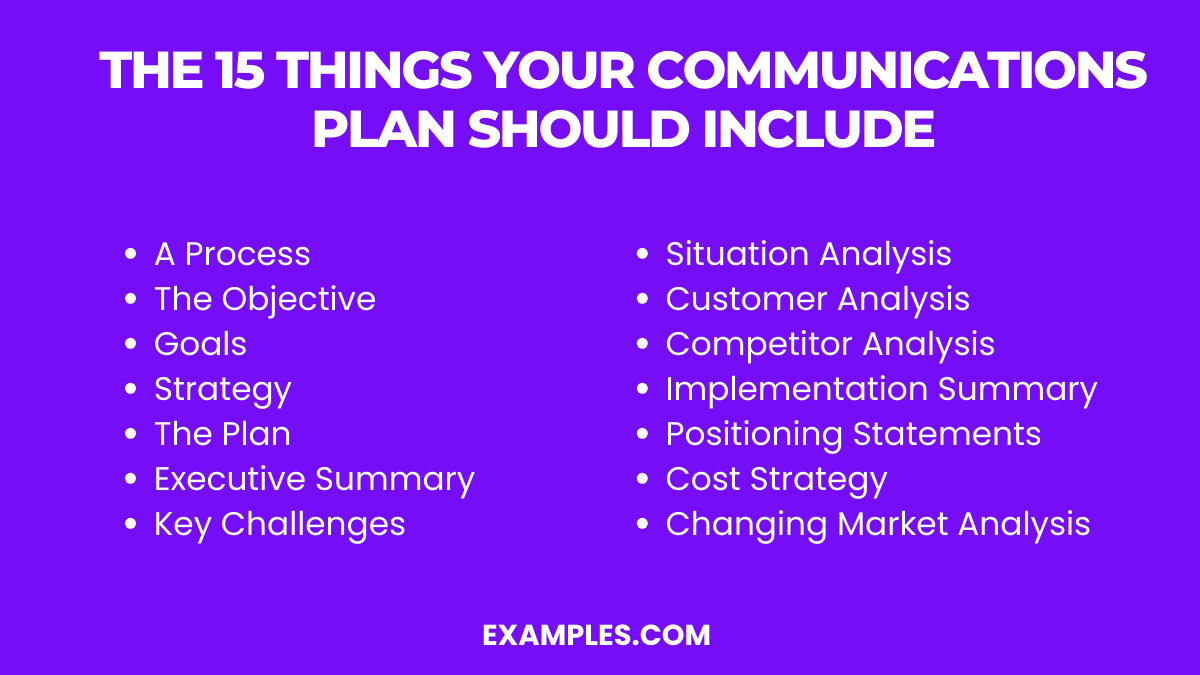What to Include in Communication Plan?
Exploring various types of communication plans is crucial for any successful organization. A well-crafted “Communications Plan Should Include” a blend of strategies tailored to specific needs and audiences. This guide delves into the complete spectrum, providing examples to illustrate how different Communication examples plans function in diverse scenarios. It highlights the importance of adapting communication techniques to suit various contexts, ensuring effective and efficient information dissemination. This introduction serves as a pathway to understanding the essence and versatility of communication plans, vital for any cohesive and dynamic organizational environment.
What a Good Communications Plan Includes?
A good communications plan should include several key components to ensure its effectiveness:
- Clearly Defined Objectives: Outlining specific, measurable goals tailored to the organization’s needs.
- Target Audience Analysis: Understanding the demographics, preferences, and needs of the intended audience.
- Strategic Messaging: Crafting clear, engaging, and relevant messages that resonate with the audience.
- Channel Selection: Choosing the most effective channels for message delivery, considering both digital and traditional mediums.
- Timelines and Milestones: Establishing a practical timeline with defined milestones for implementation and evaluation.
- Roles and Responsibilities: Assigning specific tasks and responsibilities to team members to ensure smooth execution.
- Feedback Mechanisms: Incorporating channels for receiving and acting on audience feedback.
- Evaluation and Adaptation: Setting metrics for success and regularly reviewing the plan to make necessary adjustments.
The 15 Things Your Communications Plan Should Include
A Process: The foundation of a successful communications plan lies in establishing a clear, structured process. This involves identifying objectives, setting goals, developing strategies, and implementing the plan. A solid process facilitates navigating through challenges and ensures consistent progress towards the desired outcomes.
The Objective: The objective of communications plan should be specific, measurable, and aligned with the broader goals of the organization. Whether it’s increasing conversions, fundraising, or boosting sales, the objective sets the direction for all communication efforts.
Goals: Setting achievable and measurable goals is essential. These goals should directly support the main objective, providing a roadmap for the communications strategy. They might include increasing website traffic, building an email database, or converting leads into customers.
Strategy: Strategy acts as the blueprint for achieving set goals. It outlines the methods and approaches to be used in the communication efforts, ensuring alignment with the overall objectives and vision of the plan.
The Plan: The plan details the execution of strategies and tactics. It encompasses all elements of the communications process, from the initial conception to the final implementation, aligning them with the organization’s mission and vision.
Executive Summary: An executive summary provides a concise overview of the communications plan. It highlights the key points, including the mission, vision, objectives, strategies, and tactics, serving as a quick reference guide for stakeholders.
Key Challenges: Identifying potential challenges is crucial. This involves anticipating obstacles that might hinder the success of the communications plan, such as budget constraints, market competition, or internal hurdles.
Situation Analysis: A thorough situation analysis assesses the current market conditions, organizational strengths and weaknesses, and industry trends. This analysis informs the communications strategy and helps in adapting to changing environments.
Customer Analysis: Understanding the target audience is vital. Customer analysis involves segmenting the audience, identifying their needs and preferences, and tailoring communication strategies to engage them effectively.
Competitor Analysis: Analyzing competitors helps in understanding the market landscape. This includes examining their strengths, weaknesses, and communication strategies to find competitive advantages and opportunities for differentiation.
Implementation Summary: This section details how the plan will be put into action. It assigns responsibilities, sets timelines, and outlines the resources needed for effective implementation.
Positioning Statements: Positioning statements define how the organization differentiates itself from competitors. They articulate the unique value proposition and key messages to be communicated to the target audience.
Cost Strategy: A cost strategy evaluates the financial aspects of the communications plan. It considers budget allocation, resource management, and cost-effectiveness to ensure the plan is financially sustainable.
Changing Market Analysis: Adapting to market changes is crucial for long-term success. This analysis forecasts potential market shifts and prepares the organization to respond proactively to emerging trends and challenges.
Metrics: Metrics are essential for measuring the effectiveness of the communications plan. They provide tangible data to assess progress, inform decision-making, and guide future strategy adjustments.
The community tool box on Developing a Plan for Communication plan from the Community Tool Box outlines steps to create an effective communication plan. It emphasizes the importance of understanding your purpose, identifying your audience, crafting your message, considering resources, and preparing for obstacles. The guide also highlights the significance of connecting with the media, creating an action plan, and the crucial role of evaluation. This comprehensive approach aims to enhance communication effectiveness in community initiatives and organizations.
The article Building a Communication Plan: Every Piece Matters from DINFOS Pavilion delves into creating an effective communication plan strategy through research, action planning, and evaluation. It details a practical scenario at a Navy base, highlighting the importance of understanding the problem, setting clear goals and objectives, identifying key publics, and crafting tailored messages. The plan emphasizes strategies and tactics, budget considerations, and the necessity of regular evaluation to ensure the desired impact. This resource is a comprehensive guide for anyone looking to develop a cohesive and impactful communication plan.





